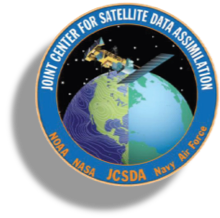Article by Dr. François Vandenberghe, JCSDA OBS core team
The JCSDA Near Real-Time (NRT) Observation Monitoring application now includes Global Navigation Satellite System Radio Occultation (GNSSRO) observations from all receiving satellites currently operational at NOAA (COSMIC-2, MetOp, KOMPSAT-5, TanDEM-X and TerraSAR-X). This dedicated monitoring page, available at http://nrt.jcsda.org/hofx/gnss-ro.html, is continuously updated and refreshed. It is designed to showcase the current capabilities of the Unified Forward Operator (UFO), which provides essential building blocks to assimilate observations from a wide variety of observing instruments. The addition of GNSSRO data to the already existing JCSDA NRT observation monitoring capability (http://nrt.jcsda.org) is the result of a close cooperation between JCSDA, the COSMIC Data Analysis and Archive Center (CDAAC, https://www.cosmic.ucar.edu), and NOAA.
JCSDA’s GNSSRO monitoring page is unique in that it compares NOAA operational observations with the output of three different observation operators currently used at different operational centers: NOAA (NCEP Bending Angle Model), the Navy (Radio Occultation Processing Package 1-D) and ECMWF (Radio Occultation Processing Package 2-D). Those operators, available from the JEDI UFO libraries, take NOAA 6-hour forecasts as input and compute the predicted GNSSRO measurements at their actual locations four times a day. The monitoring pages provide a quantitative evaluation of the UFO performance, of each operational operator against the actual observations.
The monitoring pages also show the NRT occultation locations over the globe. The footprint of the COSMIC-2 constellation can be clearly seen in the tropical regions. The COSMIC-2 mission is currently the largest contributor of GNSSRO observations to NOAA (~4000 profiles/day). Interestingly, the monitoring pages recently revealed an issue with the occultation geometry on rare occasions. Because the problem was only sporadically affecting a small number of occultations, it may not have been detected without continuous monitoring.
JCSDA is working with colleagues in the UK to add the MetOffice’s GNSSRO operational observation operator to the JEDI UFO library. This will extend JCSDA’s NRT monitoring capability to four of the most advanced GNSSRO operators used in operational NWP applications around the world.
Figure 1. Locations of all NOAA operational Radio Occultations Observations worldwide available for operations by ten minutes increment between 00 and 06 UTC on September 28, 2020.
Figure 2. Locations of all NOAA operational Radio Occultation Observations worldwide available for operation between 00 and 06 UTC on September 28, 2020.
Figure 3. Observations minus model background (O-B) statistics from JCSDA’s near-real-time GNSSRO monitoring website for all COSMIC-2 radio-occultation observations valid between 00 and 06 UTC on September 28, 2020.



